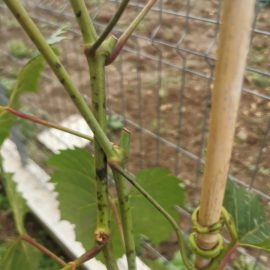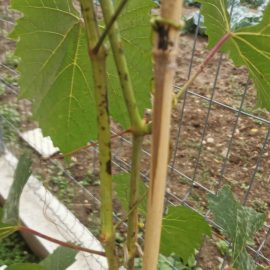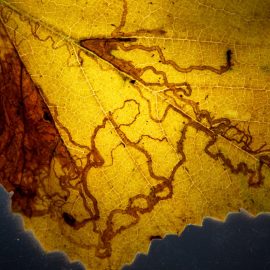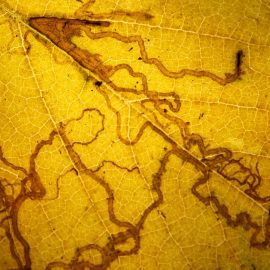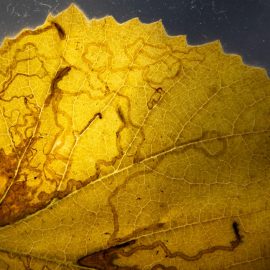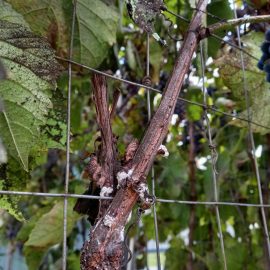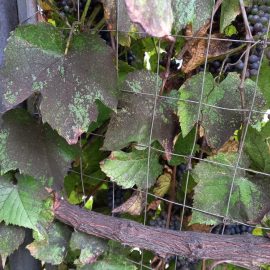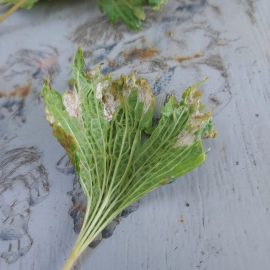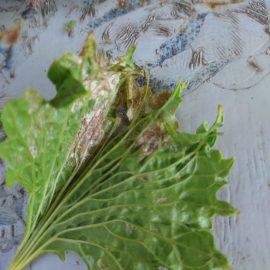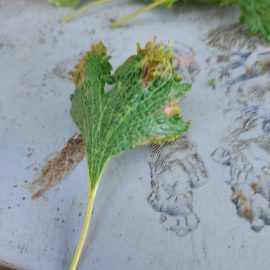Grapevine phylloxera – pest management
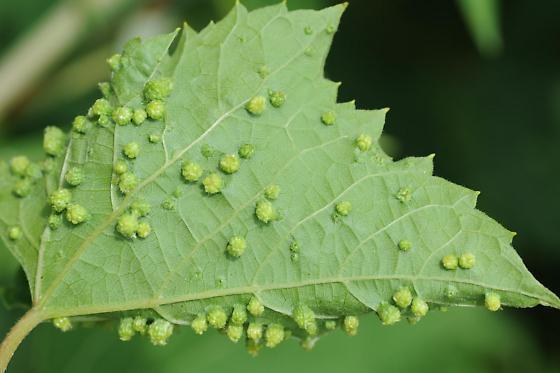
Grapevine phylloxera (Daktulosphaira vitifoliae) is a pest mostly found in vineyards. It has 4 forms, which are differentiated through distinct morphological characteristics. Only two are important: root phylloxera (attacking the roots) – a very dangerous form and leaf phylloxera (a form that attacks the leaves).
In the case of the leaf form, on the underside of the leaves, irregularly shaped galls appear. Their color is yellow-green at first, then they turn fawn-brown. Following the attack, the metabolism of the leaves is reduced, causing incomplete maturation of the shoot’s wood.
The root form causes nodosities and tuberosities on the roots. The attacked plants become weak, drying out in 5-10 years.
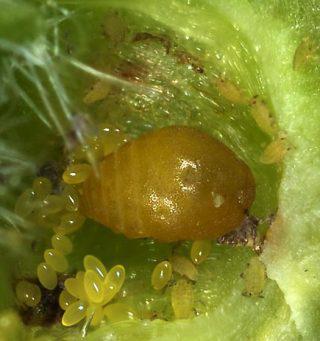
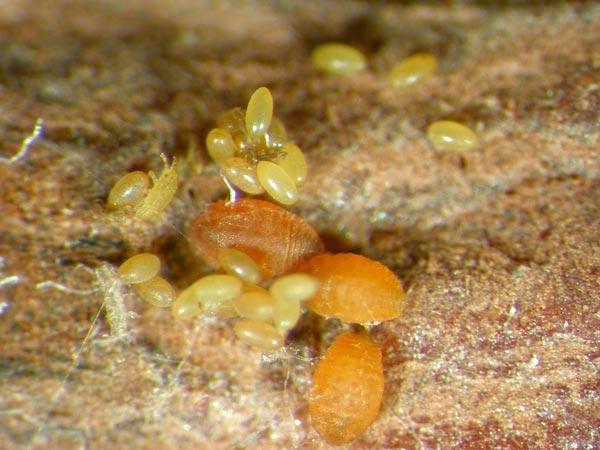
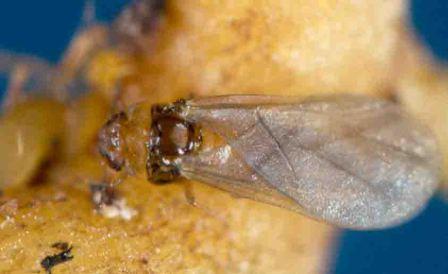
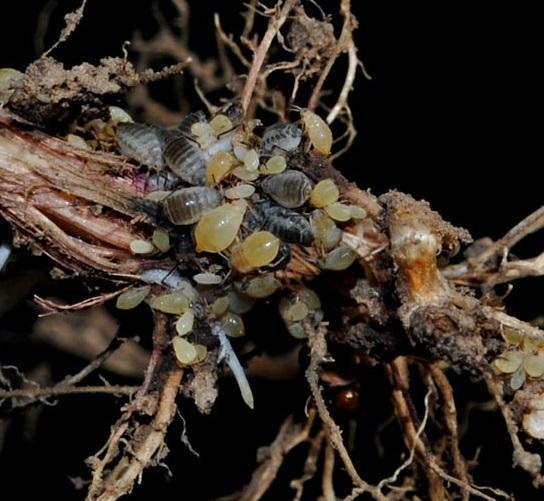
Biology and ecology
The species is polyvoltine, and according to the place where it develops, on American or European grapevine, phylloxera has two biological cycles: one complete (with the 4 forms) and an incomplete evolutionary one (only the root form).
The complete cycle. Phylloxera overwinters in the egg stage (eggs laid in autumn) in the cracks of the bark of stumps or tendrils. From there, in spring, the queen hatches. The larvae migrate from the stems to the upper side of the leaves where they feed by stinging and sucking the intracellular fluid. Following the attack, at the place of the stings, due to the irritating action of the saliva, on the underside of the limb, galls appear. They are the size of a pea, yellow-green at first, then fawn-brown.
Incomplete cycle. In one year, 5-7 generations evolve, which at maturity lay 40-100 unfertilized eggs. After 8-12 days, the larvae appear, whose development lasts 20-30 days. The last generation overwinters on the roots. They hibernate as larvae of different ages on the underground organs, up to a depth of 40 cm, emerging on the surface when the soil temperature is 10º C.
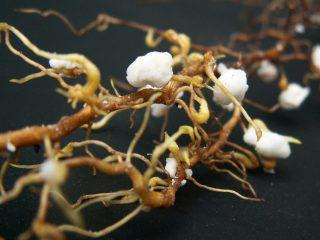

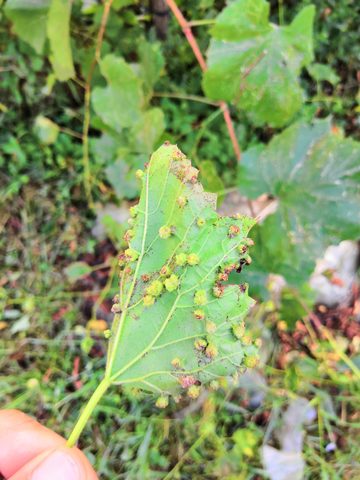
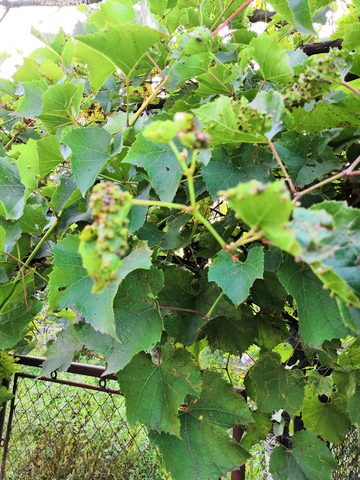
Damage. Phylloxera attacks various species of the genus Vitis, both cultivated and spontaneous. Many European varieties are very sensitive to the attack of the root form. American grapevine, however, displays high resistance to the attack. These pests sting and suck the intracellular fluid. On the attacked roots, characteristic deformations appear, called nodules and tuberosities. Nodules form on the thicker roots, the tissues crack, so various fungi and bacteria can penetrate them. This can later contribute to root rot.
The attacked grapevines have yellowed leaves, are weak, do not develop, produce less and less fruit, and in 5-10 years they dry out.
Pest management
Prevention of Phylloxera – root form. The most effective method of preventing the attack of this pest is the grafting of European grapevine varieties on hardy American rootstocks. Another (preventive) method is the use of tolerant rootstock. The breeding of the pest is favored by the cultivation of grapevines on clayey and loamy-sandy soils and it is disadvantaged by the cultivation on sandy soils.
Controlling Phylloxera – leaf form. It is controlled by applying insecticide treatments specific to aphid control. The optimal time to apply them is in spring, in the interval between budding and the sprouting of the first 2-3 leaves.
Recommended products
-
You can find products on a different store
Change Store -
You can find products on a different store
Change Store -
You can find products on a different store
Change Store -
You can find products on a different store
Change Store -
You can find products on a different store
Change Store -
You can find products on a different store
Change Store -
You can find products on a different store
Change Store -
You can find products on a different store
Change Store -
You can find products on a different store
Change Store -
You can find products on a different store
Change Store -
You can find products on a different store
Change Store -
You can find products on a different store
Change Store -
You can find products on a different store
Change Store -
You can find products on a different store
Change Store -
You can find products on a different store
Change Store -
You can find products on a different store
Change Store -
You can find products on a different store
Change Store -
You can find products on a different store
Change Store -
You can find products on a different store
Change Store -
You can find products on a different store
Change Store -
You can find products on a different store
Change Store -
You can find products on a different store
Change Store -
You can find products on a different store
Change Store -
You can find products on a different store
Change Store














































































































































































































































































































































































































































